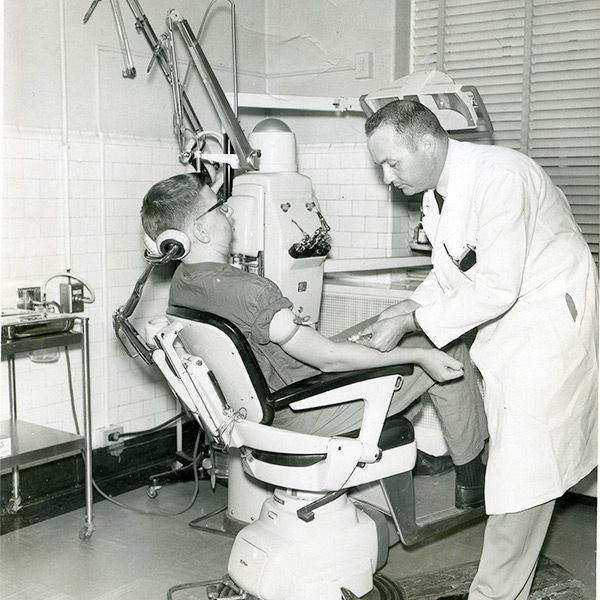

Sponsored by: Dr. Franklin G. Mason
The 1960s were known for advancements in sterility. Sterile disposable needles were first used by the military during WWII and dentists began using them in 1959. Dentists also adopted the use of the autoclave, and its method of cold sterilization, to sanitize dental instruments.
By the early 1960s, most dentists had acquired high-speed drills with attached water coolants. Drills were either belt-driven or air-driven. New dentists, equipping their offices for the first time, often chose to use air-compressors while older dentists with small offices elected to use belt-driven drills due to space constraints. The removal of portable suction units from the treatment room to basements or another room opened up space for new equipment including the dental stool, motorized conventional chairs with motorized backs, and true contour chairs. Older x-ray machines were replaced by new and safer x-ray machines with improved radiation protection and electronic timers.
With the introduction of the fully reclining dental chair in 1958 came the shift to sit-down, four-handed dentistry. As the dentist was able to sit while working on his patients he was able to do more with less fatigue. The addition of a dental assistant had become standard in most offices by this time and these extra hands allowed for the dentist and assistant to treat the patient more efficiently.
In 1965, a year after the passage of the Civil Rights Act of 1964, the American Dental Association’s House of Delegates began requiring affiliated state and local dental societies to eliminate discriminatory membership practices.

From the Richard DeChamplain Collection.